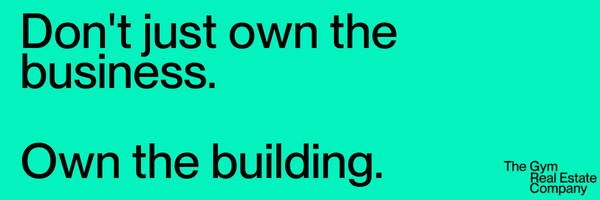On August 23, 2022, Ed Maciejewski died from cancer. He is one of my best friends and the only business partner I’ve ever had.
Older relatives have passed away, but this was the first friend that I’ve lost.
It’s one thing when 89-year-old Nana kicks it. But this was a whole other feeling.
He was one of my boys. We went on trips together, we drank way too much together and if you didn’t know our relationship, you’d wonder why these two guys, twenty years apart keep referring to each other as “fuckface”.
But he was also my business partner in a real estate holdings company we started.
In 2015, we found a property, crunched the numbers, and went 50/50 on an investment that would turn out to be insanely ROI positive.
The building we purchased together is less than a month away from finally opening with our new tenant - a brewery. For Ed and I, this couldn’t be more fitting.
As you may have heard, doing business with friends provides plenty of cautionary tales.
But our business partnership never interfered with our friendship, and I’m immensely proud of that.
I’m sharing this with you because partnerships in business, especially the small business sector of the fitness industry, can carry a negative connotation.
Partnership in a commercial real estate holdings company is significantly less difficult than partnerships in traditional service or product-based businesses.
But here are a few tips that hopefully you can carry over to your situation if you’re in a partnership:
Be brutally honest. Every instance in which you bite your tongue will add a drop of resentment to your glass. On a long enough timeline of you letting things slide, not speaking up, or otherwise being passive in the partnership, that glass spills over and it’s not an easy mess to clean up.
Know your role. You each must have a level of self-awareness and be able to say “I suck at this thing, and I probably shouldn’t be in charge of that in our business.” This will allow each partner the anonymity to use their own superpowers and be able to lean on the other for their kryptonite tasks.
Run tight meetings. Ed was a project manager in his career and his ability to lead a meeting, establish key action items and close out a meeting with each of us having specific tasks and deadlines was so valuable to our business — and to me as a growing entrepreneur.
Partnership is not friendship. If you can’t emotionally handle a meeting with your business partner in which he or she has to dig into you, and then go have a beer as a friend — then partnership may not be for you. Partners discuss business and those emotions are left there. Don’t bring them into the friendship.
Hopefully, this advice will spark and long-awaited conversation between yourself and your partner or help provide a framework if you do plan to co-mingle friends + business.
A partnership isn’t for everybody, but if you do go that route, I can only hope you’re fortunate enough to find your own Ed.
xoxo
Stu
Cracking The Code On Coach Compensation.
There are best practices + theories, but not even Soul Cycle has the payroll solution that both coaches and owners are looking for.

Let me start by stating that how you compensate your coaching staff is a complicated topic that has to account for several other variables in your business — your revenue + operating model, geographical market, how you view the role of instructors within your business, etc.
To that last point — Are you hiring instructors with the mindset that this is a temporary gig for them and that in a few years they will be replaced with a younger, more vibrant, and less expensive crop?
Or do you believe in creating a lifelong career for fitness professionals?
I personally don’t have a preference either way. The latter makes me feel warm and fuzzy inside, but the former is far more practical if I’m looking to scale a business.
But let’s talk about the different compensation models and specifically, the one that has a ton of allure, but the experiment has historically failed.
You can pay people in 4 ways.
It’s pretty simple.
Pay hourly
Pay a set salary
Pay based on performance/commission
Barter/energy-exchange
You can choose from any of those options or even do a combination of several of them. Your only limitation is your creativity and budget.
However, the one that I want to discuss is #3 - paying coaches or instructors based on performance/commission.
Performance-based pay comes in two flavors within the fitness industry.
We typically see performance-based compensation for a business result, like sales or retention.
For example, you pay a 40% commission on the point-of-sale cash collected from a new customer. So if Sally purchases a $200/mo membership, the salesperson would receive $80 on that transaction.
The other popular method uses utilization metrics. The more bodies you can recruit to attend your specific class, the more money you make.
Those structures typically look like this:
*assuming a 30-person class cap
Flat rate = $35/class.
If 20 members register for class (66% utilization rate) = $55/class
If 26 members register for class (87% utilization rate) = $75/class
If all 30 members register for class (100% sold out) = $95/class
So the more popular the instructor becomes and promotes their class schedule, the more money they make.
For those of you wondering how someone can get paid $95 for a group fitness class, this is why understanding your microeconomics and ARPC (Average Revenue Per Person Per Class) is so damn important.
If the ARPC is $22.50, and 30 individuals attended, the microgym generated $675 in revenue for that specific class.
So paying the coach $95 (15%) of the total gross revenue is easy math and well within the majority of payroll budgets.
The popularity model seems appealing but has one significant drawback.
Back in 2020, I chronicled the woes that Soul Cycle had been experiencing with their class attendance-based compensation.
To summarize the issues of this model:
Creating an incentive to increase class attendance is great for business.
Instructors have to produce a significant amount of content to draw in prospective class participants.
If successful, members become more loyal to the individual instructor than to the fitness brand.
We can all see where this can take an unfavorable turn as instructors become celebrities in their own right and their star power and ego start to present vulnerabilities to the business.
And while the drawbacks of this compensation model were well known by Soul Cycle and the media back in 2020, it wasn’t until this year that Soul Cycle made the official adjustments to their compensation plans.
After being pushed back on its heels in 2020, the iconic spin company had to re-evaluate the profitability of its lower-performing corporate studios and readjust its payroll budget.
What was once touted as a genius compensation model is now being re-evaluated and embarking on a new objective: How do we incentivize trainers to advertise their classes, while not allowing their celebrity status and payroll to run amuck?
Here’s the compensation model I like for MOST situations.
Salary + Commission (performance-based).
That’s it. Nothing radical. But here’s my argument for this compensation model.
1. Commission only is not practical long-term.
Most of us have held jobs that were mainly commission-based - sales, waitress/bartender, outbound lead generation, etc.
And during a specific time in your life, this model worked out just fine. You had lower expenses and high ambition.
However, if you’re growing a family, purchasing a home, and taking on the responsibilities that come as you mature in life, the lack of predictable income can be very unsettling.
And yes, I am fully aware the top 1% of earners in the world do so in commission-based careers. However, the unit economics of gym memberships don’t exactly track the same as selling yachts, cranes, jewelry, or other high-ticket sales items.
2. Base salaries don’t de-incentivize employees.
Colleagues of mine who love the commission-only model believe that offering a base salary will not properly incentivize employees to help grow the business.
And I agree - unless you know how to do it correctly.
Most of the compensation models I create use a salary + commission scheme with the following ratio:
~40% Base salary + ~60% Commission
For example, a GM who makes a $3,200/mo base salary and averages $4,800/mo in various commissions - totals $8,000/mo or $96,000 annually.
The base salary isn’t enough for them to live comfortably, but at least that employee can afford their needs during slow sales or retention cycles (or however their comp plan is designed).
3. Start with retention, then sales.
Most fitness employees are not overly skilled or excited about sales. However, they do enjoy the relationship-building part of their job and are typically much more intrigued about retention-based compensation structures.
From there, you can identify your sales-driven team members and create compensation plans that focus on the lead nurture and sale of a new member.
If you’re an owner who is also the best salesperson, this scheme will complement your current situation until you can replace yourself as the sales lead.
At the end of the day, it boils down to these two things…
Are your employees fulfilled in their work?
Are they compensated to a degree THEY deem fair + appropriate?
This is the never-ending game of Whack-A-Mole that we play as business owners looking to develop our team.
A 20-year-old coach who gets paid an hourly rate for 20 hours per week probably has high fulfillment and they are happy with their compensation.
That same coach at 32, who is now engaged and thinking about starting a family is going to need their compensation bucket re-evaluated.
Fast forward to when they are 36 years old. Are they still just as fulfilled coaching the 5 am class every day? Or are they seeking more managerial opportunities within the organization?
No matter what compensation model you opt into, you’ll have to ensure the employee is continuously fulfilled in their career and they are making an amount of money to support their lifestyle.
Falling short in either of these will result in you posting job ads and beginning the interview process all over again.
So get creative in your compensation plans.
Give attendance base pay a try.
Develop a salary + commission structure.
Because at the end of the day - there is no right or wrong way to compensate employees.
But there is an optimal strategy for your business and specific employees that will need to be discovered if you want to see continual growth.
Need help with your compensation plans? Reply to this email and let’s chat.








